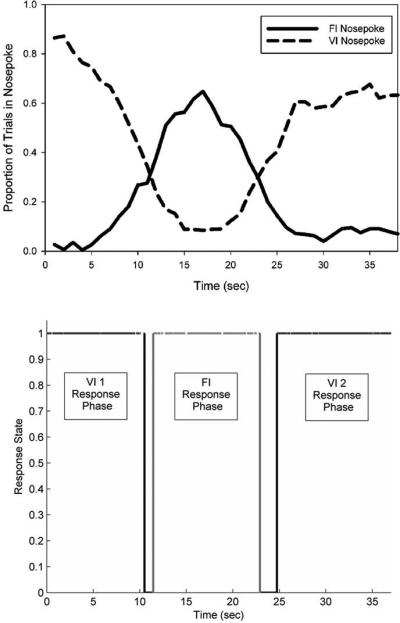Figure 4.

Session average and single trial behavior during a concurrent 15s variable-interval/fixed-interval procedure (see Figure 1B). The top panel shows the average proportion of time in which a representative rat had its snout within either the VI or FI nosepoke. As can be seen, FI responses peaked in a symmetrical manner around the criterion time of 15 sec, with VI responding occurring with high likelihood during all other times. The bottom panel shows VI (black lines) and FI (grey lines) nosepoke occupancy on an individual probe trial. As can be seen, the rat initially occupied the VI nosepoke, before switching to the FI nosepoke around the criterion FI time. After the FI duration had elapsed, the rat switched back to occupying the VI nosepoke. Note the short (~1-2 sec) periods of transition, during which the rat backed away from the nosepoke it was occupying, and approached the nosepoke it was about to occupy. Figure as originally published in Portugal, G. S., Wilson, A. G., & Matell, M. S. (2011). Behavioral sensitivity of temporally modulated striatal neurons. Front Integr Neurosci, 5, 30. doi: 10.3389/fnint.2011.00030
